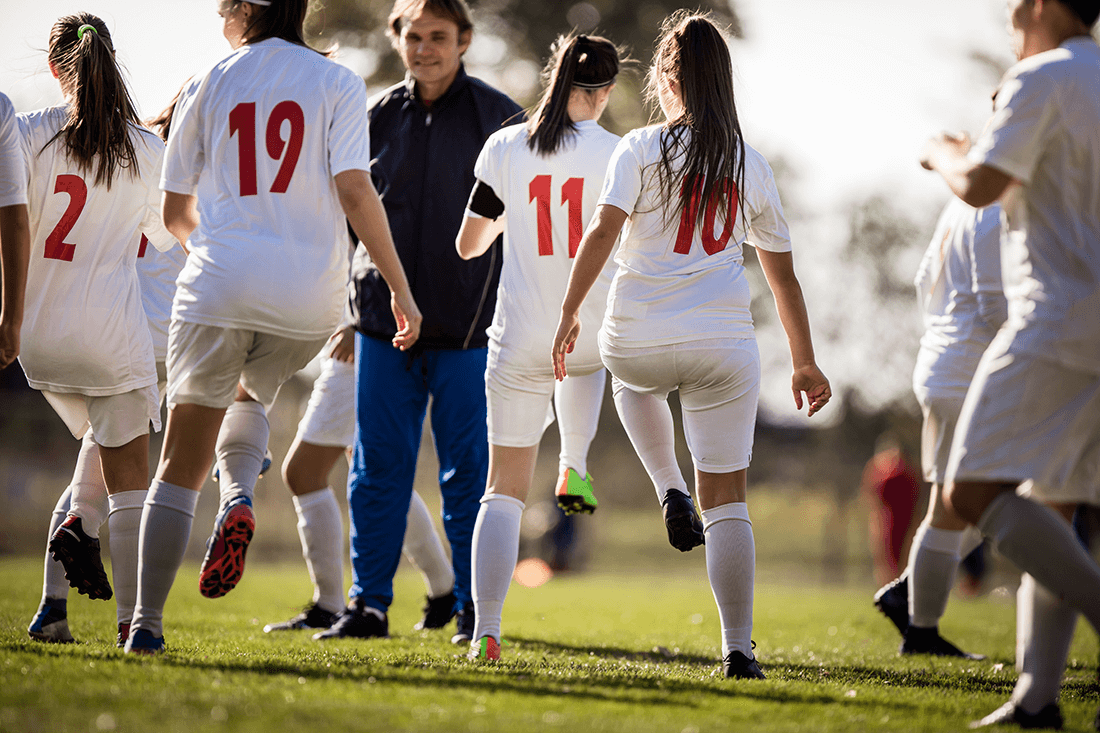
Are Concussions In Soccer Preventable?
The popularity of soccer has soared in recent decades, in part because parents perceive it to be safer than other sports. Yet it’s important to understand its risks. Ankle sprains are common. A torn anterior cruciate ligament can take an athlete out of action for up to a year. And a concussion, whose symptoms typically go away in a few days or weeks, can set kids back academically and sometimes lead to persistent, distressing symptoms.
Making soccer safe is vital. “We don’t want kids not to play sports,” says Margot Putukian, M.D., director of athletic medicine at Princeton University. “Soccer is one of the safest sports out there.” But, she adds, “Concussions do occur and they’re important.”
Efforts to make soccer safer include stricter rules enforcement, padded headgear, neck strengthening and more. A review of the research suggests some of these measures may help, but many await stronger evidence.
What helps, and what doesn’t?
As part of the world’s leading conference on concussion in sport, experts met in Berlin in 2016 to review strategies for reducing concussion risk across all sports. They reported on the role of protective equipment, rules and regulations, and other efforts. Only three studies addressed concussions in soccer, and these included athletes in a broad range of settings, from 12 year-old club players to seasoned professionals.
Here’s what they found.
- Stricter rules enforcement: Likely effective. It is possible that stricter enforcement of rules can reduce head injuries caused by high elbows during heading duels and other infractions. In a study of professional Norwegian soccer players, arm-to-head incidents causing interruption of play were nearly 30% lower during a season when referees handed out more red cards. Leg-to-head injuries were reduced by a similar amount.
- Headgear: Effectiveness unproven. The quality of the research on padded headgear is uneven. One research team reported fewer concussions in youth soccer when players wore headgear, but acknowledged weaknesses in the study methods. Another study in women college players did not find headgear protective. Some worry that the use of headgear could lead to more aggressive heading and aerial challenges, and more head injuries.
Other measures?
- “Appropriate” balls: Generally endorsed.The American Academy of Pediatrics (AAP) says soccer balls should be “water resistant, sized appropriately for age, and not hyperinflated.” Research has not shown that large, wet or overinflated balls increase concussion risk, but most experts agree these are sensible recommendations.
- Proper heading technique: Generally endorsed. Although most heading-related injuries happen from contact with another player, not the ball, teaching proper heading technique in practices before introducing heading in games could help, and is widely endorsed, including by the AAP. Research has shown that heading-related concussions are more frequent during games. U.S. Soccer’s 2015 rule banning heading in under-10 soccer and limiting it to practices in players 11 to 13 would provide a window of opportunity to learn safe technique before young players enter the heat of competition.
- Aerial training: Research underway. Putukian, who sits on the medical advisory board of U.S. Soccer, says restrictions on heading in youth soccer are aimed at eliminating the contact that occurs during the heading duel. “The reasoning [for the rules] was not because heading caused concussions, but because the behavior of heading and the aerial challenge was associated with concussions,” she says. She recently joined a team of researchers to study whether aerial training programs can reduce concussions that occur during collisions such as these.
- Neck strength: Not proven protective in soccer. Neck muscles control the speed, power and position of the head when it strikes a ball. In theory, strong muscles could help reduce the impact of the ball on the head, send some of the force down the neck to the torso and lessen the risk of concussion. A large 2014 study provides limited evidence to support this concept. In it, more than 6700 high school male and female athletes participated in a neck strengthening program. Lacrosse and basketball players who had concussions had less muscular necks and less overall neck strength. However, neck strength did not affect concussion rates among soccer players.
- Head-impact measurement devices: Error-prone. The current research suggests impact-measuring sensors cannot diagnose concussions or identify players who may be at risk of head injury based on the number or severity of blows to the head. Researchers at Virginia Tech compared “subconcussive” head impacts measured by one such device to video-recorded impacts among 26 collegiate women’s soccer players over the course of a season. The device recorded 8,999 impacts. The videos confirmed only 1703. In other words, the device recorded 7,536 false impacts, a staggering error rate that rendered it almost useless.
Until more prevention strategies are proven effective…
Experts recommend these 5 key steps to reduce problems caused by concussions:
- Recognize. Athletes, parents and coaches should know the signs and symptoms of concussion.
- Report. Athletes should report symptoms to coaches or parents.
- Remove. Athletes with a suspected concussion should immediately be removed from play.
- Rest. After a brief period of rest (one to two days), athletes should gradually return to increasingly more demanding activities.
- Re-evaluate. Athletes should not return to play until evaluated by a health professional competent in concussion care.

